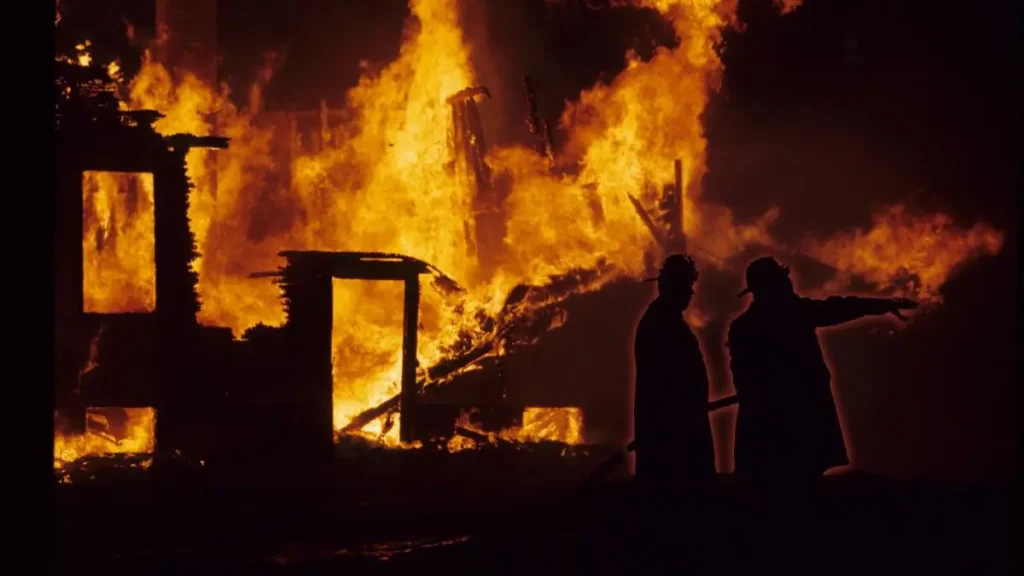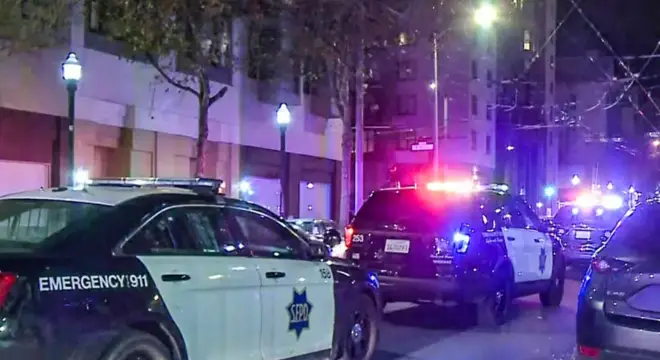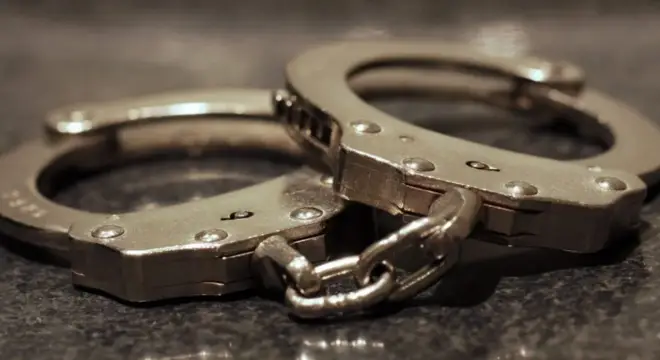Tragic L.A. House Fire Claims Two Lives, Sends Five to Hospital
When I first read about the Sunland fire in Los Angeles, it didn’t feel like just another local headline — it felt personal. Two lives lost, five people rushed to hospitals, and a neighborhood left standing in shock. Fires like these remind me how fragile our sense of safety really is.
It happened late on a quiet Saturday night, around 11:10 p.m., in the 10900 block of North Scoville Avenue. Firefighters arrived to find a one-story home completely engulfed in flames. They went in fast — what they call an “aggressive interior attack” — searching for anyone trapped inside. Within thirty minutes, thirty-six firefighters had brought the blaze under control.
But even that speed wasn’t enough to save everyone. Two people were already beyond help when rescuers reached them. An 87-year-old man, found outside with critical burns, was rushed to the hospital. Four other adults were treated for smoke inhalation. In total, sixteen residents from the property were displaced — their lives packed into moments of panic and smoke.
What hit me hardest was what firefighters didn’t hear that night: no smoke alarms. Maybe they were broken. Maybe they weren’t there at all. The house was built in 1948, long before modern safety codes. It’s a detail that sounds small — until you realize how many older Los Angeles homes still rely on outdated wiring, old detectors, or none at all.
The Los Angeles Fire Department’s Arson and Counter-Terrorism Section is still investigating the cause. But behind every official statement is a quieter truth: most tragedies like this aren’t sudden. They build over time — through neglect, aging systems, or the belief that “it won’t happen to me.”
It’s easy to scroll past stories like this. But if you live in an older home, especially in LA, I want you to pause and think — when was the last time you checked your smoke alarms?
What do you think causes people to ignore these small safety habits until it’s too late?
Inside the Scene: A 1948-Built Home Engulfed in Flames

According to the Los Angeles Fire Department’s official statement, firefighters reached the Sunland property within minutes of the first call. The one-story, 1,359-square-foot home — built back in 1948 — was already burning from end to end when they arrived.
The LAFD report described how crews launched a fast, interior attack while searching for anyone trapped inside. You can almost picture the scene — heavy smoke, falling heat, and teams trying to move faster than fire itself. Within half an hour, the flames were out, but the home was destroyed.
An elderly man — 87 years old — was found outside with critical burns. Others stood on the curb, coughing and shaking as paramedics moved them toward ambulances. Around sixteen people were displaced that night. The Red Cross and the Mayor’s Crisis Response Team stepped in to help with food, shelter, and emotional support.
In another recent case, even pets weren’t spared — a dog was rescued after a Sheboygan home fire destroyed the property and displaced its residents. These moments remind us that fire doesn’t just destroy homes — it shakes entire lives.
I keep thinking about that — sixteen people losing their home in one hour. It’s not just fire damage; it’s photo albums, medicine, kids’ backpacks, and the quiet comfort of routine — gone.
Cause Still Under Investigation: What Authorities Are Probing
As People magazine reported, investigators haven’t confirmed how the blaze began. The LAFD’s Arson and Counter-Terrorism Section is still examining what sparked it — maybe faulty wiring, maybe a heating unit, maybe something entirely unexpected. The county medical examiner will determine how the two victims died.
No alarms were heard inside the house. That single line from the LAFD stood out to me more than anything. It’s a haunting silence — and possibly the difference between survival and tragedy.
What makes this part frustrating is how common it is. I’ve seen this pattern again and again: older homes, often passed down through generations, rarely get full electrical inspections. Outdated wiring and missing smoke detectors turn small sparks into fatal fires.
We can’t change what happened on Scoville Avenue. But we can learn from it — because the truth is, most fires like this don’t begin as unstoppable disasters; they begin as preventable moments that no one notices.
“We Didn’t Hear Alarms”: The Smoke-Alarm Wake-Up Call
When firefighters say they didn’t hear alarms, it tells a bigger story than one home fire. Nationwide, nearly three out of five home-fire deaths happen where smoke alarms aren’t working or missing altogether — that’s straight from the National Fire Protection Association.
The LAFD even runs a free smoke-alarm program for low-income or senior residents. You can call your local station and they’ll come install or check detectors. Most people don’t know that — until tragedy reminds them why it matters.
I’m not saying this to scare you. I’m saying it because I’ve met families who thought they were safe — until a dead battery or old alarm failed them. So if you live in an older Los Angeles home, especially pre-1970s, this is your sign: test your alarms today. It takes five minutes and could buy you five more years of peace of mind.
I’ve been following a small but growing WhatsApp community that shares quick home safety checks, fire-prevention tips, and verified local updates — honestly, it’s been a lifesaver for staying alert without doomscrolling. Worth joining if you care about keeping your home safe.
How Common Are Home Fires in Los Angeles?

Los Angeles averages more than a thousand structure fires each year, based on recent LAFD annual reports. Many happen in neighborhoods full of mid-century homes — built long before modern codes required hard-wired alarms or upgraded circuits.
Think about that for a second: a city famous for sunshine still loses dozens of residents to house fires every year. The reasons are rarely dramatic. It’s old outlets, overloaded extension cords, space heaters too close to curtains — small, human oversights.
Few days ago, an early-morning blaze in Adams County destroyed a family home and displaced one resident. Different place, same heartbreak — and the same lessons about how fast fire moves when safety steps are skipped.
To me, this is the real context missing from most headlines. The Sunland fire wasn’t an isolated tragedy; it was a mirror. It reflects how fragile aging infrastructure and everyday habits can become when ignored for too long.
Community Response: Aid, Grief, and Resilience
In the hours after the flames died down, something else rose — community. The American Red Cross Los Angeles Region worked through the night alongside the Mayor’s Crisis Response Team, helping families find shelter, clothing, and medication. Volunteers showed up with blankets, food, and quiet empathy.
It’s moments like these that show what Los Angeles really is — not just a sprawl of houses, but people who step up when others fall.
I’ve covered plenty of crises in my career, but this pattern never gets old: tragedy breaks walls, and neighbors build bridges. Maybe that’s the only silver lining worth holding on to.
So, I’ll ask you — if your community faced something like this tonight, would you know how to help? Or even who to call first?
Lessons for Homeowners and Renters: Preventing the Next Tragedy
Every time a fire like this happens, I see two reactions. Some people shake their heads and move on. Others pause — they check their alarms, unplug old heaters, maybe even call an electrician. That second group? They’re the ones who learn before life forces them to.
If you own or rent an older home in Los Angeles, here’s what I’d tell you from experience:
- Test your smoke alarms monthly. Replace batteries twice a year — daylight savings is a good reminder.
- Update wiring if your home was built before the ‘70s. Aluminum or brittle insulation is a hidden hazard.
- Avoid plugging heavy appliances into extension cords. Use grounded outlets instead.
- Create a two-minute exit plan. Every person in your home should know how to get out, even in the dark.
The LAFD, NFPA, and Ready.gov all have free resources for families — you can even schedule a safety inspection.
You don’t need to overhaul your house overnight. Just fix one risk this week. One small step can stop the next tragedy from ever making headlines.
What Happens Next: Investigation, Support, and Rebuilding
The official fire investigation will take weeks, maybe months. The LAFD’s Arson and Counter-Terrorism Section will test debris samples, interview witnesses, and reconstruct the timeline. Meanwhile, the Los Angeles County Medical Examiner will finalize reports on the victims’ cause of death.
For the families left behind, the next steps aren’t just about insurance claims or rebuilding walls. It’s the quiet, grinding work of recovery — finding a new home, replacing documents, rebuilding memories from ashes.
Local non-profits and community groups have already begun collecting essentials. If you live nearby, check neighborhood apps or local Red Cross listings. Even a small donation — blankets, shoes, kids’ books — helps more than you think.
Stories like this fade fast online, but for the people involved, the fire doesn’t end when the smoke clears. That’s where community really matters.
Investigations like these often reveal hidden motives or human errors — as seen in the Sterling home fire case, where an arrest was made after the blaze exposed an insurance scheme.
Reflection: A Night That Reminds Los Angeles of Fire’s Power
I’ve written about enough fires to know that the statistics never capture what really burns — the loss of normalcy. Two people gone, five injured, sixteen displaced — those are numbers. But behind each number is a lifetime, a family, and a neighborhood that now sees night differently.
The Sunland fire is a reminder that safety isn’t automatic. It’s a habit — one we have to practice. And maybe that’s the quiet takeaway from all of this: check your alarms, know your exits, care a little more about the unseen risks inside your walls.
Because at the end of the day, prevention isn’t about fear. It’s about love — love for your family, your home, and the moments you don’t want to lose.
So before you scroll to the next story, do one thing for me — look at the nearest smoke alarm. Is its light blinking? If not, fix it tonight.
What’s one small home-safety habit you think most people overlook until it’s too late?
If you’re interested in how different communities across the U.S. are coping with house fires and recovery, visit our Home Incidents category— it’s where we track similar stories, lessons, and resilience from real people.
Disclaimer: Information in this article is based on official updates from the Los Angeles Fire Department and verified media reports at the time of writing. Details may evolve as the investigation continues. Readers are encouraged to follow LAFD’s official channels for the latest verified updates.


